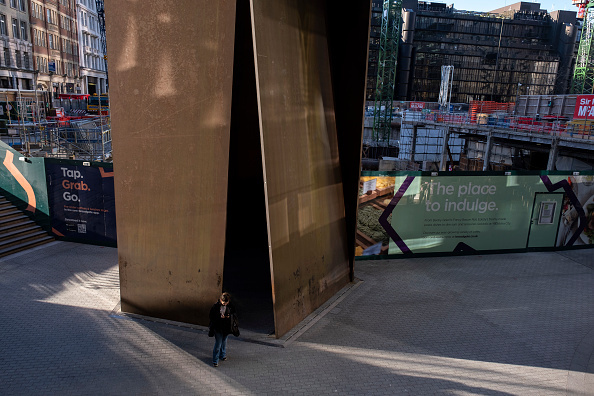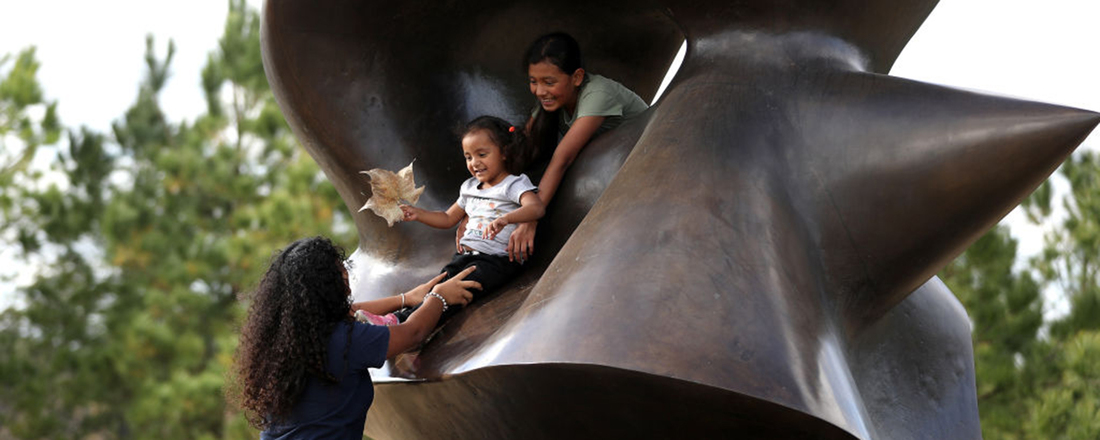Get updates from The Developer straight to your inbox Yes, please!
Turds in the plaza: How do we fix public art?
Art for public spaces has long been an area of hot debate. Is community engagement the answer to better commissioning and a positive legacy?

“Nobody wants to upset anybody with art,” says Shiro Muchiri, founder of townhouse gallery SoShiro Space in Marylebone. “If today’s art is only about what size and what budget, we might end up in a very boring era.”
Muchiri is discussing art for public spaces, an area of hot debate since at least the 1970s, when artist James Wines coined the phrase “Plop Art” and said of public art: “I don’t care if they want to put up these boring glass boxes, but why do they always deposit that little turd in the plaza when they leave?”
More than a decade on, Tom Wolfe’s article, The Worship of Art: Notes on the New God – published in Harper’s in October 1984 characterises the history of public sculpture in America as going from glorifying ideals and triumphs, to glorifying “the person or group who paid for it”, to the glorification of art itself:
“If people want to place Turds in the Plaza as a form of religious offering or prayer, and they own the plazas, there isn’t much anybody else can do about it,” Wolfe writes. “But what happens when they use public money, tax money, to do the same thing on plazas owned by the public? At that point you’re in for a glorious farce.”
Patreons get access to our podcasts first. If you love what we do, please consider joining them and supporting us. www.patreon.com/thedeveloperuk
No fan of Henry Moore or Richard Serra, Wolfe concludes that communities fail to connect with most public art because they aren’t meant to – the art is supposed to go over Joe Public’s head as that’s what legitimises it as high art: “Public bafflement or opposition is taken as evidence of an object’s spiritual worthiness.”
In the end, Wolfe considers whether it’s people, not landowners, that should determine what artworks are installed in public spaces.
That’s a question Muchiri has been asking herself, too. The gallerist has teamed up with Hanna Afolabi, founder of Mood and Space, to create a new art consultancy entitled Art in Architecture, with the ambition to change the way public art is commissioned.
Their founding idea is to use the process of commissioning art on major projects in existing communities to deliver a positive social impact at every stage of development – from community engagement through to the installation of the artwork itself.
Social value may be gaining in importance as the S in ESG investment, but art is rarely seen as a means to making that positive impact. But Afolabi argues that art can play a unique role and crack some notoriously difficult nuts when it comes to social value: “We assume that everyone wants a new job or an apprenticeship, but actually some people just want to feel that they belong,” says Afolabi. “There’s a massive opportunity to use art to make people to feel represented in their community.”
Inducing a feeling of belonging is not an easy thing to do. But the potential for art doesn’t end there. Muchiri also sees the opportunity to support artists from diverse backgrounds – people from the community who may not have access to the substantial resources required to create public art, ie. you can’t make a bronze statue in a bedsit. There’s also the opportunity to learn about art, the art industry, the artistic process and connect with artists.

Muchiri and Afolabi say that if you want to gain the social value benefits, art must be considered at every stage of development, beginning with community engagement. Multiple stages of the process have social value, from the benefits of tapping into community creativity to empowerment through the process of commissioning.
“Challenges typically come up when you’ve left it too late in the day,” says Afolabi. “Then you’ve got this indicative budget and a certain amount of space with a certain amount of reinforcement under the area identified, and that’s your public art location. You are trying to stuff as much as possible into this tiny brief, with a budget that was made up several years prior to the actual delivery.”
“If you have considered it from the outset at the time in which you put the brief together… then you have a broader chance of success.”
To enable participation, Muchiri says the artist should also be someone who engages in community-led art. The artist’s brief should be to focus on creating a work that “characterises the neighbourhood at the time it’s being built.” There is a strong feeling that the artwork should be saying something about the existing place and its people.
“Art is a visual language that everyone understands. It creates a timestamp of what is precious to a community”
Muchiri says art for communities undergoing change through redevelopment should mark that moment in time: “It needs to say something significant about now.” She believes an artwork that represents the now will have a more powerful legacy – so that when you visit the place in future, the artwork speaks of the people who lived there at the time of construction, which allows the visitor to glimpse past and present simultaneously, giving a place depth.
Could that depth be the antidote to the development of soulless places? Many high-profile developments have been accused of being lifeless and characterless. Would the more equitable and inclusive commissioning of public art have given these sites more soul?
“Art is a visual language that everyone understands,” Afolabi adds. “It creates a timestamp of what is precious to a community and embeds it.”
One thing is certain: Involving the community is a good way to get over the fear of getting it wrong: “The art that we are most ashamed of was typically commissioned with a top-down approach that didn’t involve many people from the community,” Afolabi says. “Like most things that don’t age well, it’s because there wasn’t much consultation or diversity around the table.”
As for those historic “turds in the plaza”, the inoffensive hulking sculptures of Moore and Serra remain in cities across the UK. Their forms may say nothing about the people who lived there, but they are fun for kids to climb or clamber around – delivering social value after all.
Sign up to The Developer Weekly email to find out when new episodes of The Developer Podcast go live. You can get episodes early and our magazine when you support our podcast on Patreon at www.patreon.com/thedeveloperuk
If you love what we do, support us
Ask your organisation to become a member, buy tickets to our events or support us on Patreon
Sign up to our newsletter
Get updates from The Developer straight to your inbox
Thanks to our organisation members
© Festival of Place - Tweak Ltd., 124 City Road, London, EC1V 2NX. Tel: 020 3326 7238
